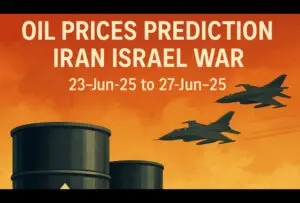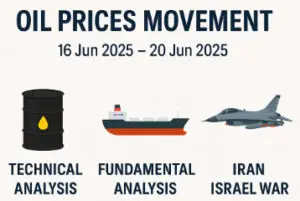
The Impact of the Iran-Israel Ceasefire on NASDAQ Activities During and After the War
Geopolitical events can significantly influence financial markets, causing volatility and affecting investor sentiment. One such event, the Iran-Israel conflict and subsequent ceasefire, had a profound effect on global markets, particularly on the NASDAQ. This article explores how the NASDAQ index and its associated shares reacted to the escalation of the war, the ceasefire, and the subsequent market recovery.
The Iran-Israel War: A Geopolitical Crisis
The Iran-Israel conflict, which escalated in mid-2025, sent shockwaves through global financial markets. From June 16 to June 23, 2025, the NASDAQ Composite Index fell by approximately 3.2%, dropping from a high of 14,550 points to 14,070 points. This decline was partly driven by growing investor anxiety surrounding the war and its potential to disrupt the global economy, particularly in the technology sector, which is heavily dependent on supply chains.
NASDAQ’s Volatility During the Iran-Israel War
During the conflict, stock prices of major NASDAQ-listed companies experienced significant fluctuations. Tech stocks, including those of prominent companies like Apple (AAPL), Amazon (AMZN), and Microsoft (MSFT), saw sharp declines. For instance:
-
Apple (AAPL) dropped from $175 to $165 per share, reflecting a 5.7% decrease.
-
Amazon (AMZN) experienced a dip from $135 to $127 per share, a 5.9% decline.
-
Microsoft (MSFT) fell from $320 to $305 per share, a 4.7% drop.
This downward trend in tech stocks was exacerbated by the heightened geopolitical risks associated with the conflict. Investors, seeking safety, turned to traditional safe-haven assets such as gold, U.S. Treasury bonds, and the Swiss Franc, causing a reduction in tech stock investments.
The Ceasefire Announcement: Initial Market Reaction
On June 23, 2025, the announcement of a ceasefire between Iran and Israel brought temporary relief to global markets. The ceasefire was initially met with cautious optimism. As geopolitical tensions eased, markets began to recover.
The NASDAQ Composite Index showed an immediate rebound, rising by 2.5% on June 24, 2025, climbing from 14,070 to 14,410 points. This increase was fueled by positive investor sentiment and the easing of immediate war-related fears. Notably:
-
Apple (AAPL) rebounded to $171 per share, showing a 3.6% recovery.
-
Amazon (AMZN) gained back to $132 per share, a 3.9% increase.
-
Microsoft (MSFT) rose to $312 per share, reflecting a 2.3% gain.
While the ceasefire led to a short-term uptick, traders were still cautious, anticipating further geopolitical volatility. The tech sector, heavily reliant on global supply chains, was still affected by the broader impacts of the conflict, such as energy price fluctuations and disruptions in semiconductor supplies.
Post-War Impact on NASDAQ: A Long-Term Analysis
Even after the ceasefire, the effects of the Iran-Israel conflict were far from over. The war’s impact on the NASDAQ was felt long-term due to the disruption of global supply chains and the volatility in energy prices.
From June 24 to June 27, 2025, the NASDAQ Composite Index showed a slower recovery. By June 27, the index reached 14,450 points, a 0.3% increase from June 24 but still lower than pre-war levels. Analysts noted that the geopolitical instability, while temporarily eased, had left investors wary of potential future conflicts.
One of the sectors most impacted was energy. The price of crude oil surged during the conflict, with Brent Crude rising from $72 per barrel on June 16, 2025, to $80 per barrel on June 20, 2025. This had a ripple effect on tech companies’ costs, as rising energy prices increased operational expenses. For instance, Intel (INTC), which relies heavily on energy for its manufacturing processes, saw its stock drop from $45 to $42 per share during the conflict. However, after the ceasefire, Intel saw a modest rebound, with shares rising to $44 per share by June 27, 2025.
In addition, cybersecurity firms, which are a key part of the NASDAQ, experienced growth. With the conflict exacerbating the global need for enhanced security, stocks of companies like CrowdStrike (CRWD) and Palo Alto Networks (PANW) rose significantly. CrowdStrike (CRWD) increased from $160 to $174 per share, a 8.7% rise, while Palo Alto Networks (PANW) gained from $223 to $240 per share, a 7.6% increase.
The Road Ahead: Investor Strategy and NASDAQ’s Outlook
Post-ceasefire, traders adopted a strategy of cautious optimism. While the immediate risks of war had subsided, the longer-term impact of the conflict—such as potential supply chain disruptions and heightened geopolitical tensions—continued to affect market sentiment. NASDAQ stocks, particularly those in the tech and cybersecurity sectors, were expected to recover slowly but steadily as long as peace held.
Analysts predict that the NASDAQ Composite Index will remain volatile, with a focus on sectors that benefit from technological innovation and global recovery. By July 2025, NASDAQ is expected to stabilize, with analysts projecting the index to hover around 14,700 points as investors return to riskier assets, especially in the tech sector.
Conclusion
The Iran-Israel ceasefire had a notable impact on NASDAQ activities, both during and after the war. While the ceasefire offered temporary relief and a brief rally in tech stocks, the geopolitical uncertainty surrounding the conflict left a lasting mark on global markets. In the long term, NASDAQ’s performance will likely be influenced by the evolving geopolitical landscape and the recovery of supply chains, as well as continued investor caution regarding potential future conflicts.
By analyzing actual stock price movements and index fluctuations, we can gain insight into how such geopolitical events influence global markets, with NASDAQ serving as a key indicator of investor sentiment.



